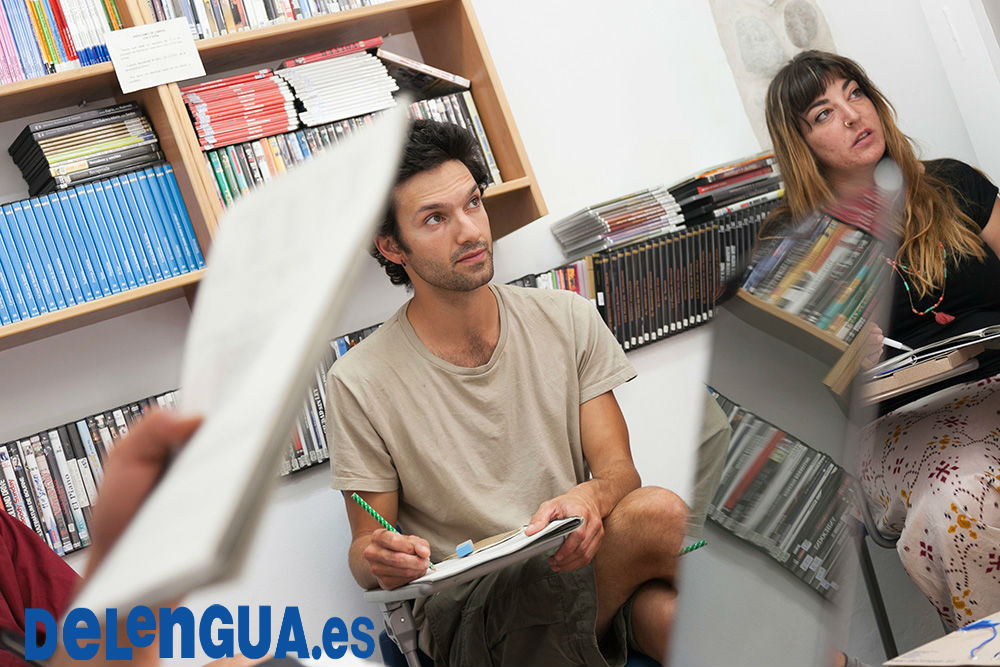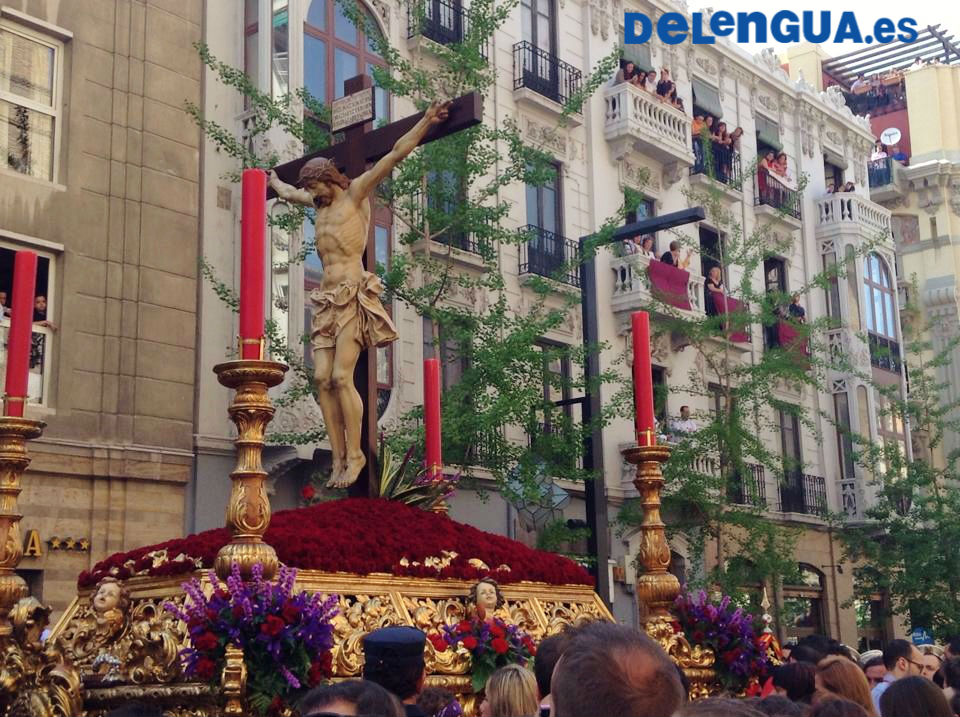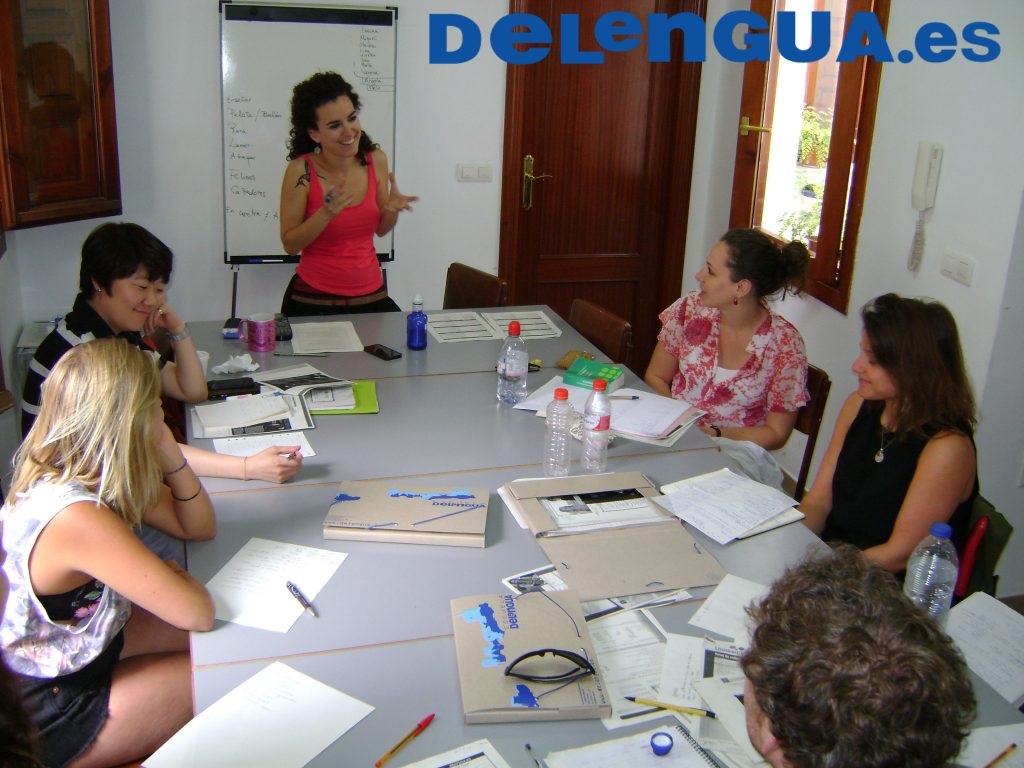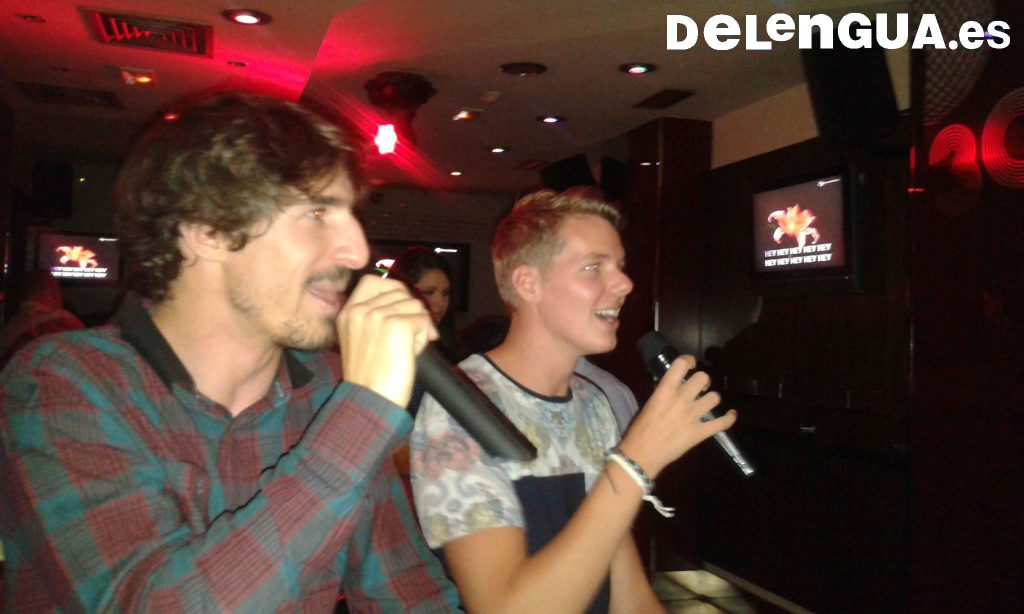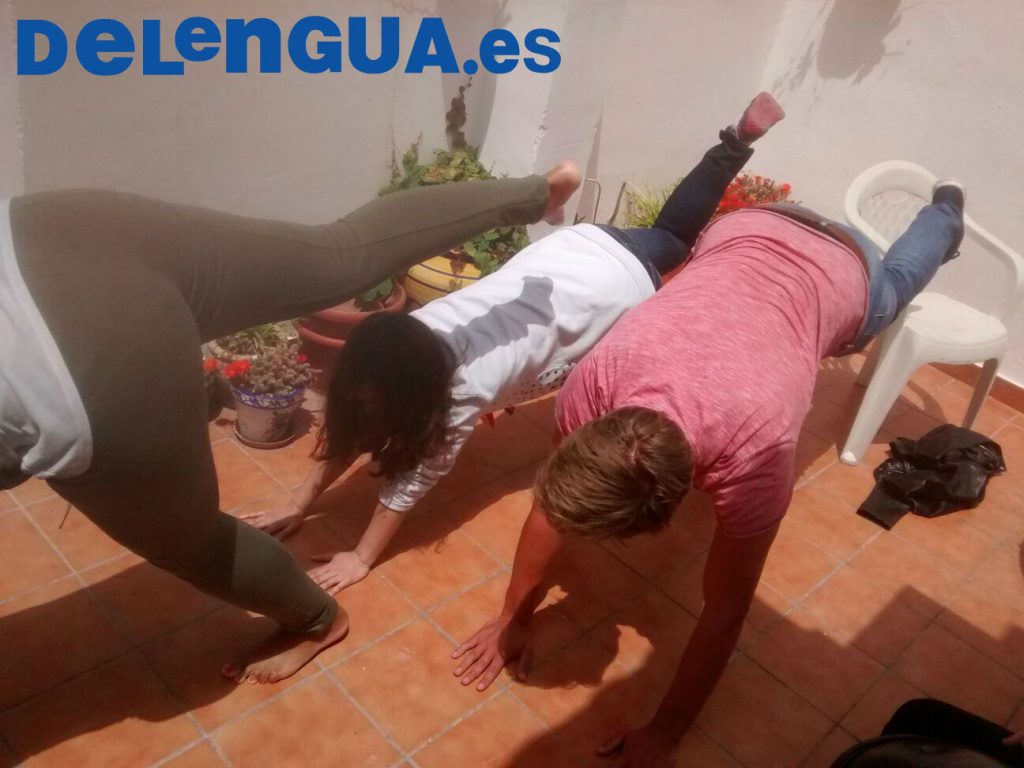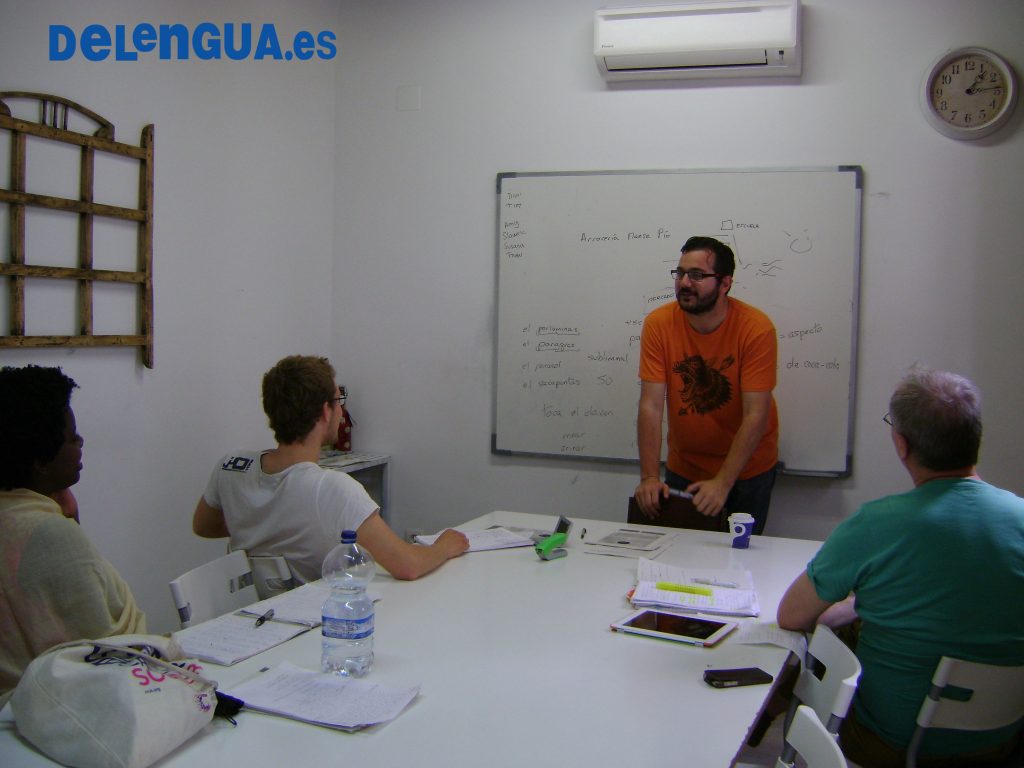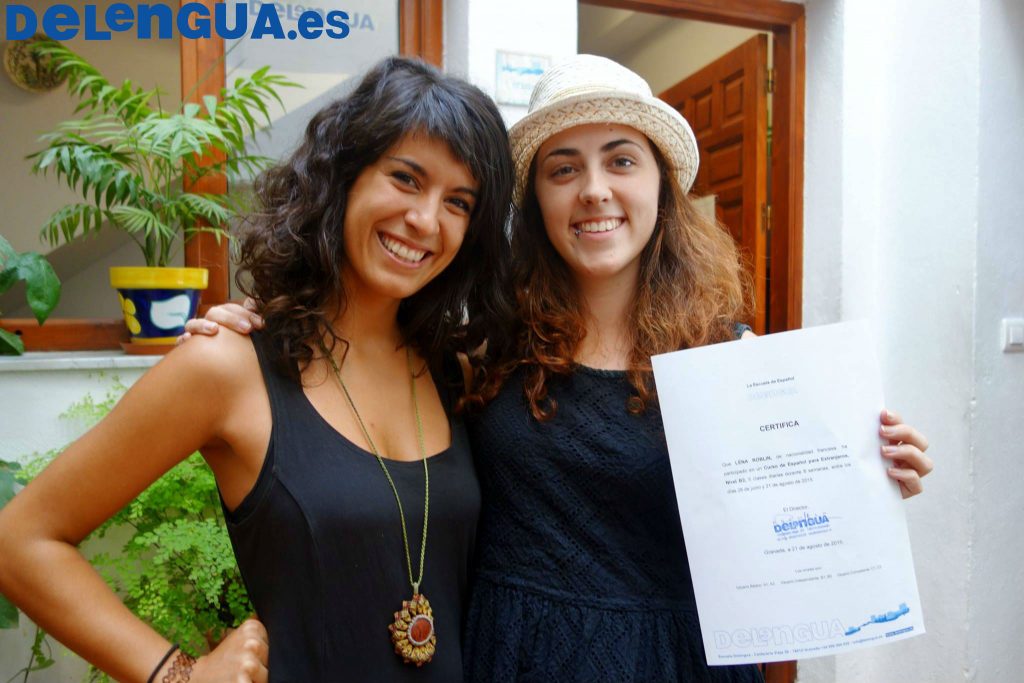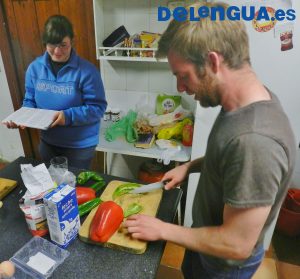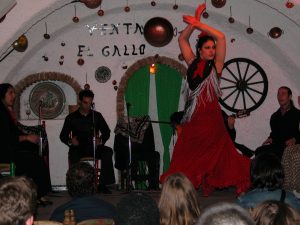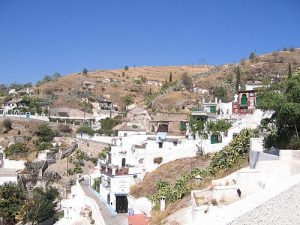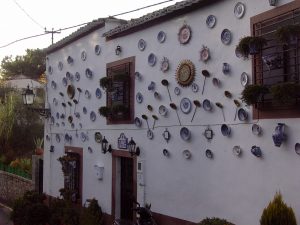| Español | Inglés | |
|---|---|---|
| Granada es y siempre ha sido una ciudad multicultural. Aparte de influencias cristianas, árabes, y judías hay otra población que caracteriza la cultura de Granada: los romaníes. Pero, ¿quiénes son los romaníes y de dónde vienen? No se puede imaginar la ciudad de Granada sin los gitanos, como son llamados también, pero sin embargo no se sabe mucho sobre ellos.
Mucha gente asocia a los gitanos con la Europa Oriental. No obstante, originalmente son del norte de la India. Hay una teoría que dice que los romaníes (y los sinti) dejaron su país en el siglo XIV y marcharon como artesanos hacía Europa. Así se convirtieron de un pueblo sedentario a un pueblo errante. Hasta el día de hoy hay grupos de romaníes que van de un lugar a otro vendiendo artesanía. Los gitanos llegaron a España en el siglo XV. Al principio, las relaciones entre la población local y los gitanos fueron en general buenas. Sin embargo, con la llegada al trono de los Reyes Católicos en 1469, la situación cambió radicalmente. Los gitanos tenían un plazo de dos meses para buscar un domicilio, trabajo y para abandonar su forma de vestir y sus costumbres. Si no cumplían esto, les amenazaron con la expulsión del país. Durante los siglos siguientes hubo varios intentos de extinguir la raza de los gitanos en España. Con el tiempo, la situación ha mejorado y los gobiernos han introducido varias medidas para una integración mejor. Sin embargo, hasta el día de hoy, aunque hay una ley contra la discriminación de los romaníes, este pueblo sigue siendo discriminado. En Granada y toda Andalucía, los gitanos forman hoy en día una parte importante de la vida cultural. Por comunidades autónomas, Andalucía cuenta con la mayor población de gitanos con cerca de 300.000, casi un 5% del total de la población de la comunidad. Una parte de la cultura andaluza que siempre se asocia con los romaníes es el flamenco. Los gitanos siempre habían sido un pueblo cantante, y encontraron en Andalucía el lugar perfecto para desarrollar su música porque esta región disfrutaba de un impresionante auge cultural, artístico y científico, debido a casi ochocientos años de mezcla de culturas árabes, judías y cristianas. Después de su llegada a Andalucía, los romaníes retomaron el flamenco para ganarse la vida, y con el tiempo lo desarrollaron y se volvieron los representantes generales del flamenco. Uno de los cantaores del flamenco moderno más influyentes era Camarón de la Isla, y su álbum más vendido se llama “Soy gitano”. Cuando estás en Granada, la influencia de la cultura gitana es algo que salta a la vista. Un ejemplo es el barrio Sacromonte, que es también conocido como el barrio de las cuevas o de los gitanos. En este barrio hay muchas casas cueva que en su mayoría están habitadas por gitanos. Lo especial de este barrio es que se puede dar un paseo por allí y encontrar a gente dando un concierto de flamenco. En la Escuela Delengua se ofrecen muchas actividades extraescolares, entre otras cosas visitas guiadas por el Sacromonte o la visita a un espectáculo de flamenco, algo que no te deberías perder si vienes a Granada. |
|
Granada is and has always been a multicultural city. Apart from Christian, Arab and Jewish influences, there is another population that characterizes Granada’s culture: the Roma. But, who are the Roma and where do they come from? One can’t imagine the city of Granada without the gypsies, like they are also called, but nevertheless there’s not much common knowledge about these people.
Normally the gypsies are associated with Eastern Europe. Nevertheless, they are originally from the North of India. There’s a theory that says that the Roma (and Sinti) left their country in the 14th century and went to Europe as craftsmen. So they converted from a sedentary to a wandering people. Until today there are still groups of Roman who go from one place to another selling craftsmanship. The gypsies reached Spain in the 15th entury. At the beginning, the relations between the local people and the gypsies were quite good. Nevertheless, when the Catholic Monarchs mounted the throne in 1469, the situation changed radically. The gypsies had a time limit of two months to find a residence, a job and to abandone their way of dressing and their costumes. If they didn’t keep to this, they were threatened with being expelled from the country. During the following centuries there were several attempts to extinguish the gypsies in Spain. In the course of time, the situation improved and the governments have introduced various measurements for a better integration. Nevertheless, although there is a law that prohibits the discrimination against the Roma, they still suffer from many disadvantages. In Granada and whole Andalusia, the gypsies form an important part of the cultural life. Andalusia is the autonomous community with the biggest share in Roman population. The 300.000 Roma living there form 5% of the complete population. One part of the Andalusian culture that is always associated with the Roma is Flamenco. The gypsies have always been a singing folk, and in Andalusia they found the perfect place to develop their music, due to the cultural, artistic and scientific heights this region enjoyed during almost 800 years of a mixture of Arab, Jewish and Christian culture. After their arrival to Granada, the Roma took up the Flamenco to earn their keep, and in the course of time they developed it and became the main represantatives of Flamenco. One of the most influential “cantaores”, how the Flamenco-singers are called, was Camerón de la Isla, and his best-selling album was called “Soy gitano” (“I’m a Gypsy”). When you are in Granada, you will directly perceive the influence of the gypsy-culture. One example is the district Sacromonte, which is also known as the district of the caves or of the gypsies. In this district there are many cave houses which are mostly inhabited by gypsies. What is special about this district is that you can go there for a walk and find people giving a Flamenco concert. At Delengua Spanish Language School you can participate in many activities, for example guided tours through the Sacromonte or visiting a Flamenco show, something you shouldn’t miss when you come to Granada. |
For more information visit our website:
Search
Archives
-
Recent Posts
Tags
activities Alhambra Andalucía Andalusia Aprende español en España Aprende español en Granada Cine Español cinema cultura Cursos de espanol en Granada Cursos de español Cursos de español en España Cursos de lengua Cursos de lengua en España Cursos de lengua en Granada Delengua activities España español fiesta film flamenco Gramática Española / Spanish Grammar Granada hiking in the Sierra Nevada la lengua española Language courses language courses in Granada language courses in Spain learn Spanish learn Spanish in Granada Learn Spanish in Spain Pedro Almodóvar senderismo en la Sierra Nevada Sierra Nevada Spain spanish Spanish Courses Spanishcourses in Granada Spanish courses in Granada Spanish Courses in Spain Spanishcourses in Spain Spanish Grammar Spanish Language School the Spanish grammar the Spanish Language




